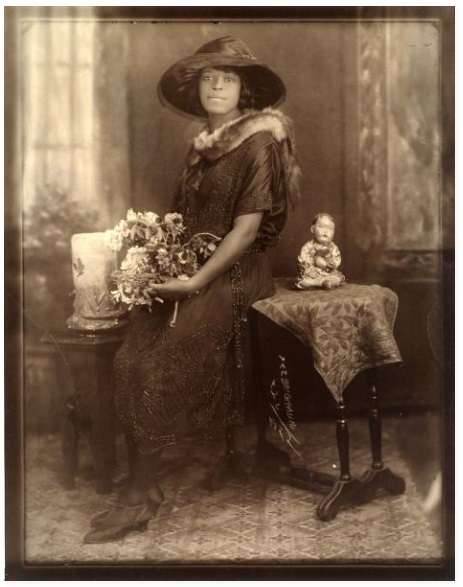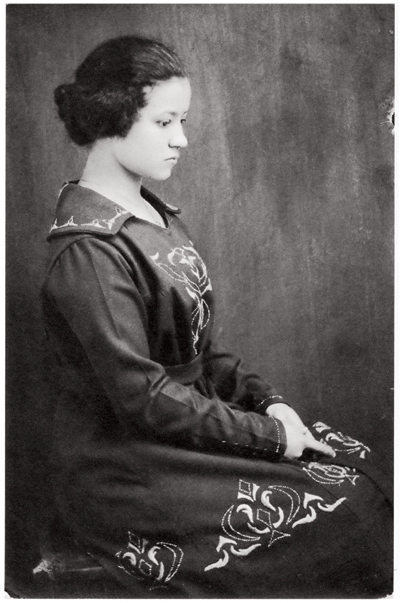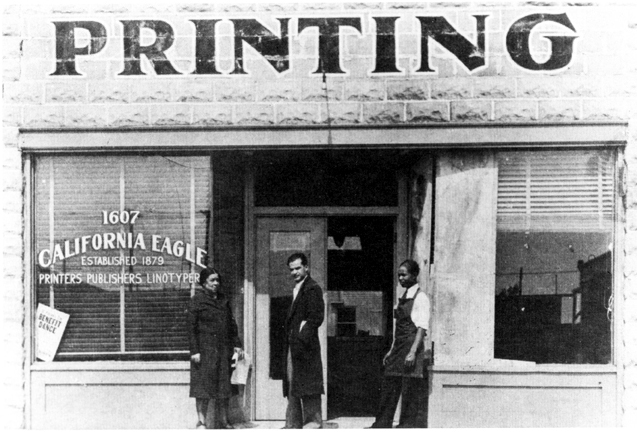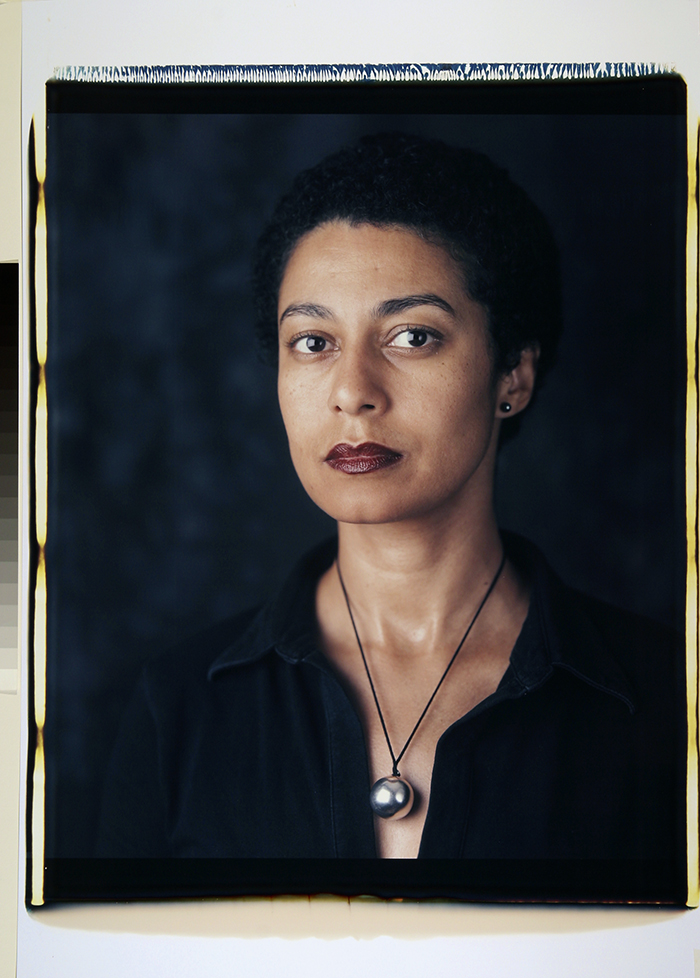Black History Month is acknowledged every year during October within the UK. It’s a month of highlighting, championing and recognising the innumerable achievements of Black people in Britain and beyond.
This month is a time to learn and reflect about the impact Black people have made within all strands of modern life from pop culture and politics to, of course, photography.
It’s also a time to understand the many oppressions Black people have faced (and still face) while still being able to reach the dizzying heights of success within their fields, it is also a time to understand the intersections of oppression Black women face under racism and sexism.
So in order to pay true homage to the trail-blazing women photographers, we have listed six Black women you should know…

Portrait of Madame E. Toussaint Welcome by James Van Der Zee
Jennie Louise Van Der Zee or better known as Madame E. Toussaint Welcome (1885 -1956), was an African American woman born in Lenox, Massachusetts, moved with her family to New York in the early 20th century.
After marrying the inventor and entrepreneur Ernest Toussaint Welcome, The Toussaint Conservatory of Art and Music in Harlem came into being, an art school and photographic studio which ran for over 40 years. The Conservatory’s first advertisement appeared in the first issue of the National Association for the Advancement of Coloured People’s (NAACP) journal, The Crisis, in 1909. This was a full-page advertisement placed by Jennie for her art school and photographic studio referring to herself as, ‘The Foremost Female Artist of the Race’.
Known as the ‘Legendary Harlemite’, Jennie was also unique in that she was one of the only African American women filmmakers from the silent film industry.

Self-portrait, early 1920s
Florestine Perrault Collins (1895-1988) navigated the social expectations of her gender and race to give visibility to Black women in New Orleans.
She was one of only 101 Black female photographers recorded in the 1920 U.S. census and, unlike her male counterparts, often focused on women and children in a domestic setting.
Florestine prioritised the dignity and pride of her subjects and tried to produce portraits that would accurate represent her clients’ individuality.
Her work is still relevant as an insight into the lives of the women she photographed and as resistance against the stereotypes surrounding women of colour that persist today.

California Eagle was founded by John James Neimore in 1879, after his death in 1912 Charlotta Bass was appointed, making Charlotte the first Black woman owner and newspaper publisher. Via America Comes Alive
Vera Jackson (1912 – 1999) was a documentary photographer who is particularly noted for the evocative narrative content of her work.
After working as an assistant to the photographer Maceo B Sheffield, Vera began her career as a photojournalist for the California Eagle, an African-American newspaper operated by the pioneering publisher-editor and civil rights activist, Charlotta Bass.
Presenting images made by Black photographers for Black readers, the paper challenged the stereotypes of the white-oriented publications of the time.
As the first African-American woman hired as a staff photographer for the New York Times, Ruby Washington (1952-2018) was a true pioneer in documentary photography.
Her camera brought her to the front lines of not just world politics but to the streets of New York City itself. One colleague recalled a time when Ruby saved his life from protestors, using her characteristic resolve to escape the situation unscathed.
Ruby’s photography tells important stories in a beautiful way. Demonstrating the highly technical art of quality photojournalism.
For an excellent New York Times’ feature of Ruby Washington, which includes a brilliant selection of her photographs click here.

Maud Sulter, Self Portrait, 2002, 828 x 560 mm, large format Polaroid photograph. The Estate of Maud Sulter ©The Estate of Maud Sulter.
Maud Sulter (1960-2008) was a Ghanian-Scottish contemporary photographer and writer whose works primarily focused on the representation and histories of Black women.
Working in many mediums including photography, collage, video and poetry, Maud used her art as a way of depicting the history and reality of the Black Diaspora in Europe.
Maud won many awards and international recognition during her lifetime, representing Britain at the first Johannesburg Biennale in 1995 with Syrcas, a series reflecting on Black histories in the Holocaust.
Known as Ya-Haddy Sisi Saye, Khadija (1992 -2017) was a Gambian-British photographer, celebrated for her extraordinary photographs during her short life, which ended, at the age of 24, in the Grenfell fire of 2017.
Through the work, Khadija questions her mixed-faith heritage, Christian and Muslim, exploring – in her words – ‘the deep-rooted urge to find solace in a higher power’.
Her chosen medium for this collection was the Victorian tintype, in black-and-white, using a wet metal plate and collodion solution. Khadija combined this method with inspiration taken from fifteenth century portraiture, investigating how the sitter’s ‘piety, virtue, soul, and prosperity’ could be evidenced.
An exhibition of nine stunning silkscreen prints by Khadija is being unveiled as part of Photo Oxford 2021 in Oxford, UK.
A lot of information has been sourced from Viewfinders: Black Women Photographers by Jeanne Moutoussamy-Ashe. Within this compendium of Black women photographers you will find many more pioneering photographers.











